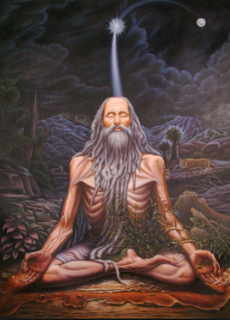Story of Patanjali:The Sage behind Yoga
Who was Maharshi Patanjali and why this name often appears in the field of Yoga?
Basically, there is no such detailed information available on Patanjali. However, they say that he was the person who wrote all those Yoga Sutras (guidebook of classical yoga), written approximately 1,700 years ago. It is made up of 195 aphorisms/sutras, or in easy terms words of wisdom. Though Yoga was being practiced in the pre-Vedic period, the great Sage Maharshi Patanjali systematized and codified the then existing practices of Yoga, its meaning and its related knowledge through his Yoga Sutras. After him, many other Sages and Yoga Masters gave whole lot of contribution for the preservation and development of this field through their literature and well documented practices.
The existence of Yoga can be found through historical evidences in the pre-Vedic period (2700 B.C.), and thereafter till Patanjali’s period. The main sources of information for Yoga practices as well as its literature are available in Vedas (4), Upanishads(108), Smritis, teachings of Buddhism, Jainism, Panini, Epics (2), Puranas (18) and so on. But after analysing the language and the teaching sutras, modern scholars place Patanjali in the second or third century CE and credit the medical essays and grammar to several other Patanjalis.
As per the traditional stories, they say Patanjali was also the author of the treatise “Mahaabhaashya” an exposition on Paanini’s “Ashtaadhyaayi”, although the debate on whether the two works “Yoga Sutras” and Mahaabhaashya” are by the same author keeps on going. Moreover, there are few traditional claims which say that he has to his credit, a medical text “Charakapratisamskrtah”, which is a revision of the medical treatise of Charaka but this work was lost.
Maharishi Patanjali is said to be the incarnation of Anantha, the holy serpent on whom Maha Vishnu reclines in Yoga Nidra. The another legend said, seeing Vishnu enraptured watching the dance of Siva, Adisesha wanted to learn the dance so that he could please his Lord. Lord Vishnu got impressed by this and blessed Adisesha by saying that Lord Siva would bless him for his devotion. He would take birth so that he could bless the human race and master the Art of Dance, said the Lord. At this time, there was a virtuous woman named Gonika, who was totally devoted to Yoga. She was praying for a worthy son, with a handful of water, when she saw a tiny serpent moving in her hand. Very soon, it turned to human form. This serpent was none other than Adisesha, who had incarnated as Patanjali. The Jeeva Samadhi of Patanjali is believed to be in Tirupattur Brahmapureswara Temple in Trichy, India where Lord Brahma installed 12 Shiva Lingams and worshipped Lord Shiva to get back his Tejas.




Comments
Post a Comment